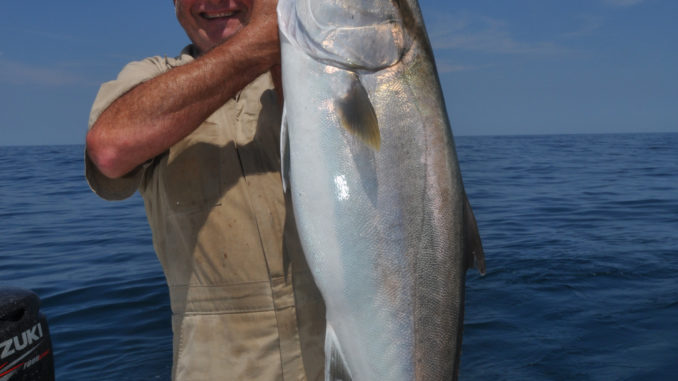
Artificial reefs out of Masonboro Inlet are prime spots to target amberjack and bonus spadefish.
On a hot and sticky morning, Capt. Jamie Rushing of Seagate Charters launched his 21-toot center console at the N.C. Wildlife Resources Commission’s public boat ramp at Wrightsville Beach and headed south toward Masonboro Inlet, getting out early to beat the crowd.
“You need to get there early or you may not have a parking space,” said Rushing.
While the same can be true at the artificial reefs just out of the inlet in spring and early summer, at least one of them, AR 372, the Five-Mile Boxcars reef, was nearly empty, with only one angler camped out. The reason he was there without any competition was that the sunken ships, train cars, reef balls and concrete rubble attracted amberjacks. The other angler was busy hooking up and breaking them off nearly as quickly.
“Not many anglers want to tangle with an amberjack,” Rushing said, “but as the other fish species begin to dwindle or anglers fill up their freezers with better-eating fish, they begin to target amberjack for a change or pace.”
Rushing said a typical amberjack weighs 25 to 50 pounds, but fishermen must anticipate hooking them up to 100 pounds, so he uses heavy tackle.
“I use big spinning rigs spooled with 50-pound braid,” he said. “I use a live-bait rig with a 50-pound leader and an 8/0 circle hook or cast a Tsunami or Yo-zuri F popper.”
A smooth ride out didn’t bother Rushing, who said calm days are better for catching amberjack.
“You want to be able to see the fish,” he said. “You also want to be able to work a popper effectively, so you don’t want much wind.”
After stopping to fill a cast net with menhaden, Rushing arrived at the reef and checked his GPS and sonar units to locate the structure. He reached into the livewell, caught a menhaden and squeezed it before tossing it over the side.
“Seeing wounded fish wriggling as they fall brings schools of amberjack to the surface,” he said. “If they are here, it won’t take long for them to start fighting over an injured menhaden.”
Rushing hooked a menhaden through the mouth and dangled it in the water to keep it frisky. Then, he tossed two more menhaden over the side. A huge fish attacked one of them, sending a geyser of spray high in the air.
“There he is,” Rushing said. “Let’s see what he will do.”
The fish struck the second Rushing lobbed the bait in its direction and was on the line for several long minutes as he maneuvered the boat.
“You have to ease the fish away from the structure,” he said. “I use a tight drag and pull the fish away. The problem is that you are fishing in 45 feet of water and the top of structure is about halfway down. If the fish strikes and you have only 30 feet of line out, he’s probably going to cut you off.”
That’s exactly what happened, but having located the fish, he turned to a surface popper to try to move them farther away from the structure.
“The farther you can lure them from the structure before they strike, the better the chances you will land them,” he said. “But they will only come so far, so you have to keep teasing them.”
An amberjack struck the popper, and the fish headed straight for the structure. Although it was on for a few minutes, it cut the line again. Rushing watched the surface and kept tossing crippled baitfish over the side, trying to hook one on a live-bait rig when the expensive lure popped back up.
“That’s usually what happens,” he said. “Another good reason for fishing on calm days is you can see your lure if it floats back to the surface after a fish breaks it off.”
Another Wrightsville Beach angler who targets amberjack is Capt. Bruce Trujillo of Tight Loop Charters. Fishing AR 372 one day, he stopped and scooped up a few cannonball jellyfish.
“You can hook amberjack at AR 372, but by later in the summer, so many anglers have caught them here that it is difficult to catch them,” he said. “Having them cut off on the structure is another problem. I usually come here to catch bait, and if an amberjack hits or chases a baitfish hooked on a Sabiki rig, I may try to catch them for a while. But, it’s really just on my way to AR 386, the Schoolhouse Reef, which is 18 miles out.
“Most people don’t want to go that far to fool around with amberjack. But the water and structure are deeper, which gives you a better chance of hooking them and actually landing them.”
Trujillo filled his livewell with cigar minnows and sardines and made a few casts with a homemade popper, hooking an amberjack that broke him off. He cranked his engines and headed to the Schoolhouse; the first thing he saw there was a dive boat.
“An amberjack will cut the line on that dive boat’s anchor line,” he said. “So that limits where we can fish. The boat is right on top of the structure, and we need to stay far enough away that we can turn the fish before that happens.
Trujillo used a rubber-band rig to take the bait down below the surface. He attached a bank sinker to the line with the rubber band about 5 feet above the baitfish, which was hooked through the nose with a 5/0 live-bait hook.
He cruised around the structure, watching his depth finder. Baitfish were showering the surface.
“The baitfish show you where to fish,” he said. “The amberjack are rushing them, making them jump and skitter.”
Trujillo hooked an amberjack beneath a school of baitfish.When it headed straight for the dive boat, he persuaded it to change its mind with 100-pound braided line and a tight drag setting. By the time he landed the fish long minutes later, Trujillo was sweating profusely. He took a few moments to drink some cold water and wipe his face with a damp towel. Then he picked up a spinning rod with a homemade popper tied to the line.
“Catching an amberjack on heavy tackle works you as hard as it works the fish,” he said. “Let’s see if we can get one to take this popper.”
Trujillo made his popper’s body from a Styrofoam crab pot float. He rigged it with a steel plate harness and large, heavy hooks.
“Unless you are rich, you can’t buy a commercial popper that can stand up to the power of an amberjack when you are using the heavy tackle it takes to get them away from the structure with any reliability,” he said. “On cheaper poppers, the hooks straighten out, or the split rings open up, so I use the biggest, heaviest split rings I can find and heavy-duty, 4/0 treble hooks for making my poppers.
“I can tighten the drag so much that it will pull the hooks from the fish’s lips before the hooks bend or the line breaks. Their jaws and lips are strong, so that means you are going to land the fish just about every time you hook up. If a fish does break off, I don’t worry about it as much as if I had lost a $40 commercial lure. Not only are homemade poppers more durable, they are much less expensive.”
Within a few casts, Trujillo’s line tightened up on an amberjack. The fish were excited by the baitfish schools and were hitting the baitfish on top. He handed the rod to Russ Luhm, his friend and fishing partner.
“You catch him a while,” he said. “When you are battling an amberjack, there’s plenty of fight to go around for everyone on board.”
Trujillo said that most anglers only want to catch one or two amberjack and that was why he brought along the jellyfish. He said spadefish lurk in the same areas that attract amberjack.
“Jellyfish are quick and easy to catch,” he said. “I just put them on ice, and when we are tired of catching amberjack, I thread one or two on the 100-pound mono on an amberjack rod with a bait needle. I drop the jellyfish down and, if the spadefish are there, it doesn’t take long for them to find it.”
DESTINATION INFORMATION
HOW TO GET THERE — I-40 and US 74 will put fishermen from most parts of North Carolina in Wrightsville Beach. A popular public boat ramp is just across the ICW drawbridge to the south. Two great spots to target spadefish and amberjack out of Masonboro and Carolina Beach inlets are AR 372, the 5-Mile Boxcars (34.06.217/77.44.950) and AR 386, the Schoolhouse Reef, (33.57.517/77.33.45).
WHEN TO GO — Amberjack show up in May and stick around all summer. The reefs closest to shore are fished the hardest sooner, making the offshore reefs better for fishing as summer wears on. Spadefish usually arrive a little later than amberjack and will leave about the same time every fall.
BEST TECHNIQUES — Live baits fished on single-hook rigs in rubber band rigs for amberjack. Also, surface poppers such as Tsunami and Yo-Zuri F poppers. Fish heavy tackle spooled with 50-pound braid. For spadefish, light spinning gear is preferred; split-shot rigs with slivers of jellyball jellyfish, shrimp or squid strips.
FISHING INFO/GUIDES — Capt. Bruce Trujillo, Tight Loop Charters, 910-675-0252; Capt. Jamie Rushing, Seagate Charters, 910-232-9693. See also Guides and Charters in Classifieds.
ACCOMMODATIONS — Sleep Inn, 5225 Market St., Wilmington, 910-313-6665, Pleasure Island Chamber of Commerce, www.pleasureislandchambernc.org.
MAPS — Capt. Segull’s Nautical Charts, 888-473-4855, www.captsegullcharts.com; Grease Chart, 800-326-3567, www.greasechart.com; Maps Unique, 910 458-9923, www.mapsunique.com.

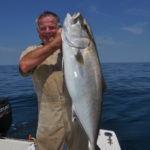
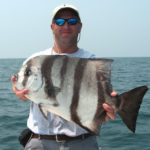
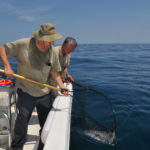
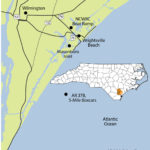




Be the first to comment